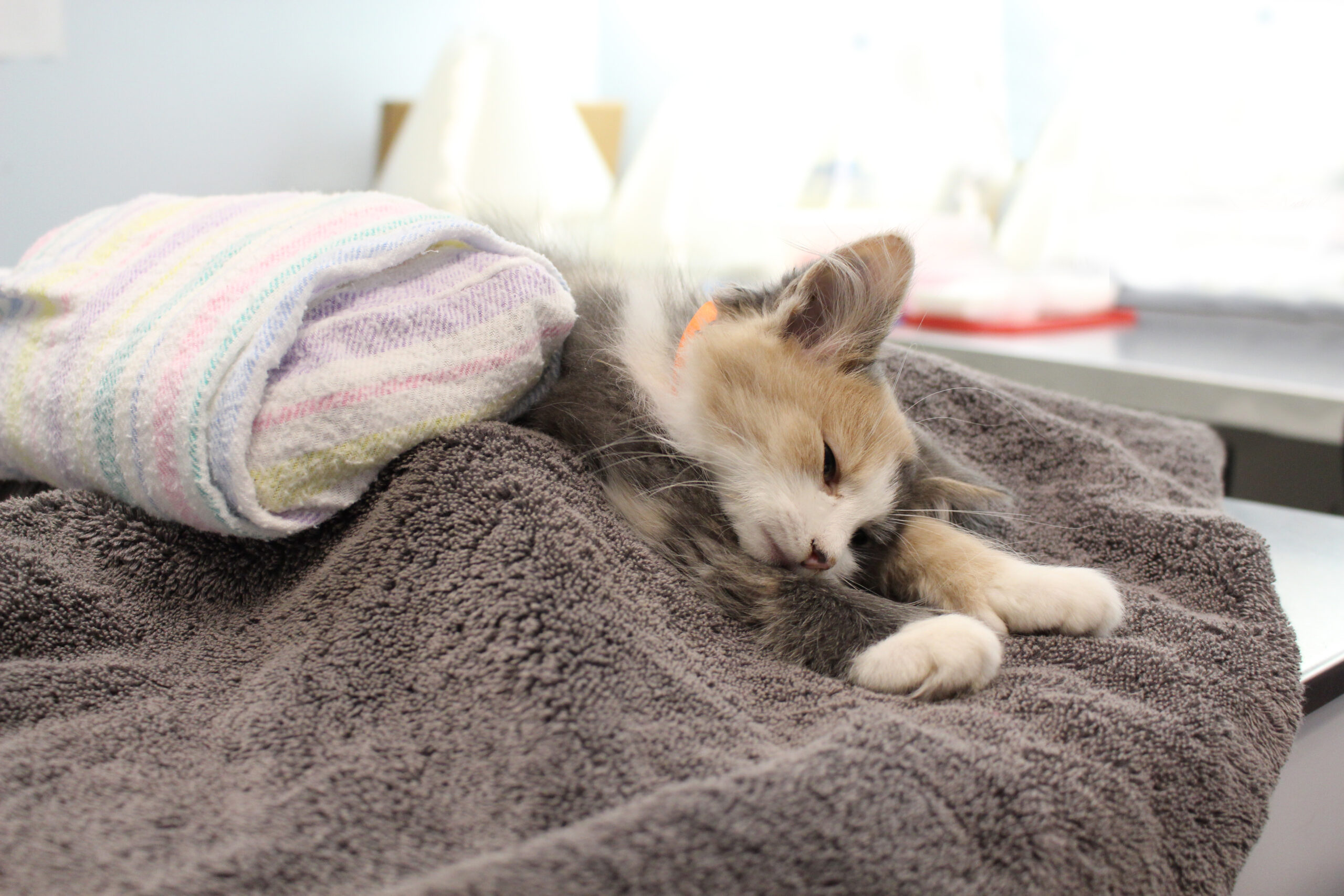How can I tell if my animal’s incision is healing properly?
by Ontario SPCA and Humane Society | Cat Care Dog Care General Pet Care | February 23, 2023

February is Spay/ Neuter Awareness Month! After your best furry friend has had a spay or neuter surgery, you may be wondering what the healing process should look like. In this blog, we’re going to share tips to help you know if your animal’s incision is healing properly.
Post-surgery
Keeping an eye on your animal’s incision site daily will ensure you can spot any changes immediately. Taking a photo is a good way to document the healing process. This will also be useful to show your veterinarian if you have any concerns. During the first 24 to 48 hours, it can be normal for the incision to be slightly inflamed or swollen. You can apply a cold ice pack, wrapped in a towel, for short periods of time (10 minutes) to help reduce any swelling, as we don’t want ice directly on an incision.
You may notice that your dog or cat is a bit groggy on the first day after surgery, but they should be back to their usual self soon afterwards. They should not exhibit any signs of pain. If you note signs of pain, contact your veterinarian.
For post-op recovery tips for dogs, click here.
Tips to prevent infection
For the first 10 to 14 days, your furry friend should wear their recovery equipment as provided by the veterinarian. This may be a cone or a properly-fitted onesie to prevent licking or chewing at the incision site. Be sure to keep your animal calm during the initial two weeks as the incision heals. Discourage them from jumping on or off furniture and keep your dog on a leash while on walks.
Keeping the incision site dry is important. If your animal does get wet, pat the area gently when they come inside. Be sure to keep a close eye on the incision daily, to check for any swelling or discharge. Do not give your furry friend a bath or allow them to swim for the first three to four weeks.
Signs of infection
Signs of infection can include:
- Bruising
- Increased redness
- Incision not closing
- A bad odour or smell
- Swelling
- Discharge of fluids
- Incision site warm/hot to the touch
When to talk to your vet
If you notice your dog or cat exhibiting any signs of infection, be sure to speak with your veterinarian immediately. Your veterinary clinic may request a photo of the incision site, so, it’s a good idea to document the healing.
Signs of pain can include being lethargic, excessive panting, whining if being picked up, shivering, or being unable to get comfortable. As a pet parent, you know your animal best! Any deviations from their usual behaviour should be discussed with your veterinarian.
For more tips on daily care and recommended activity levels post-op, read; What happens after surgery? Post-op recovery Part 2: Dogs
Categories
Testimonial
Your dedication and support
It is with and because of your dedication and support that helpless animals are being saved. Thank you for everything.
